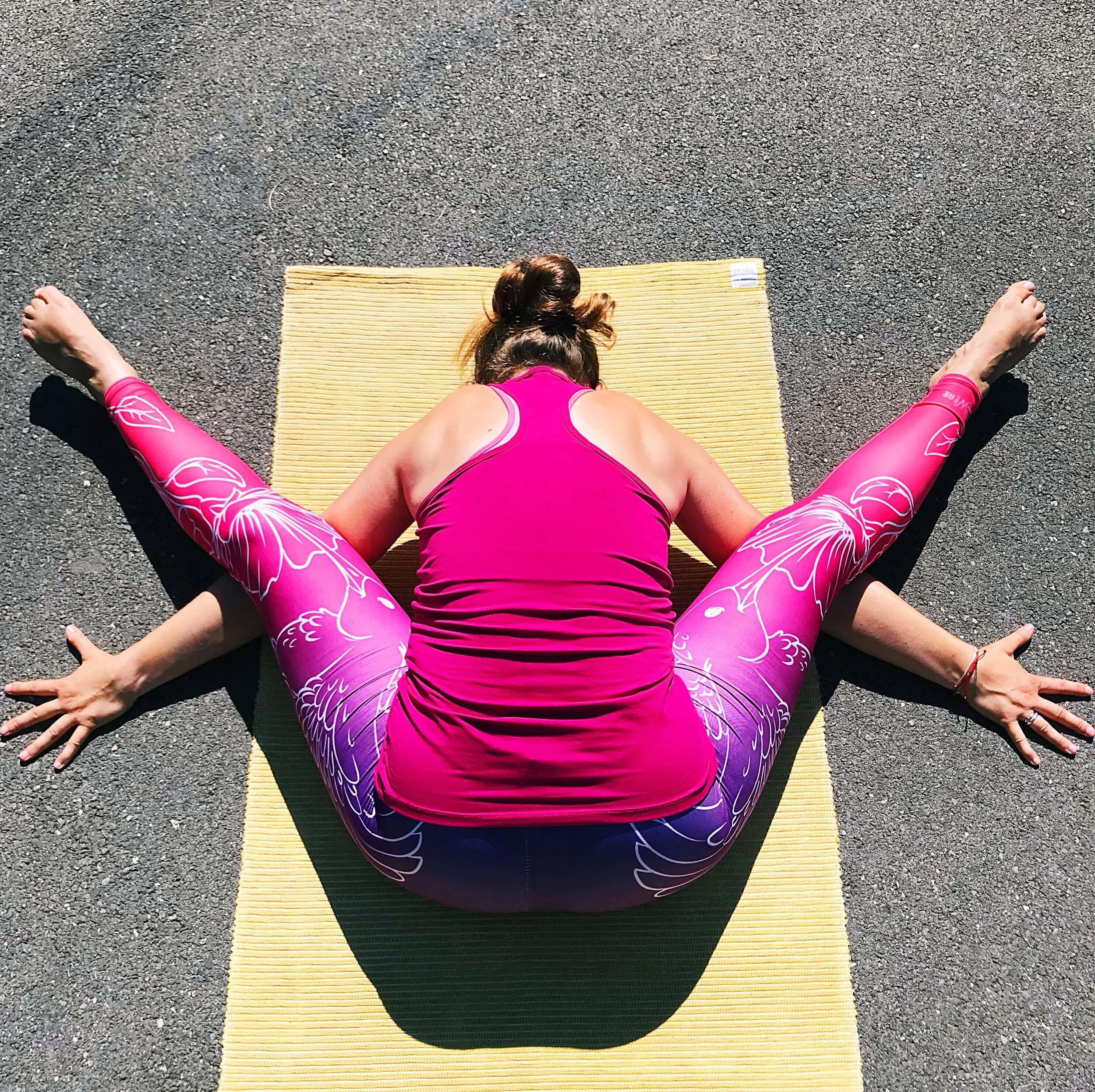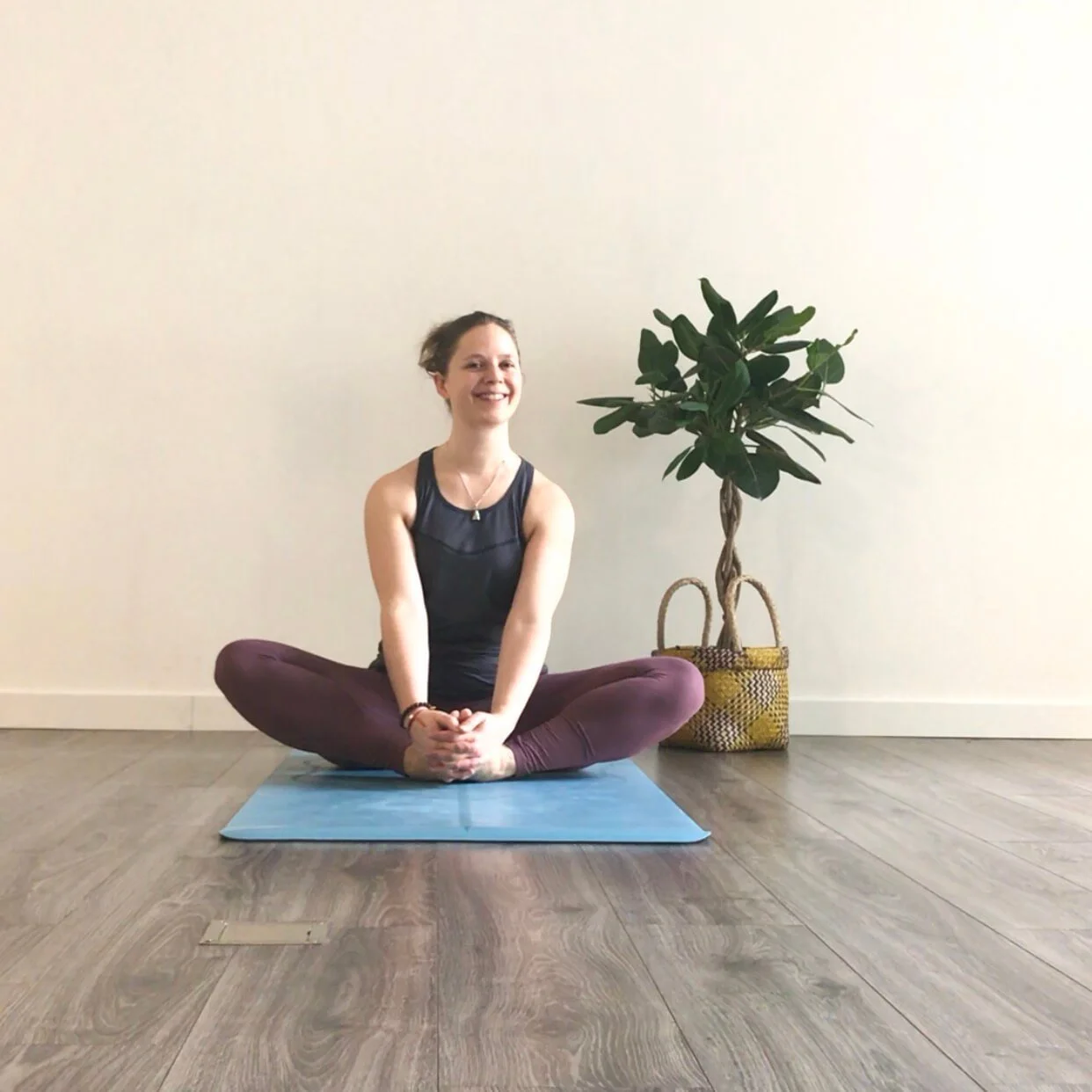ASANA: Turtle Pose - its history, benefits, and my advice to be comfortable in the pose
At the foot of my building, there is a pond with turtles. I love observing them: stacked in a pyramid shape, basking in the sun, and, as soon as someone passes by, retreating into their shells or "jumping" into the water.
I find that they embody simplicity, often making me think that humans are peculiar, always rushing around after who knows what, while we could simply appreciate being present.
So, I've decided it's time to talk about the turtle, which holds a special place in yoga.
Join me on a little journey into the history of the turtle in Hindu philosophy and its role in yoga, focusing, of course, on the turtle pose, its benefits, and my tips for practising it with ease.
Symbolism of the Turtle
A symbol of slowness in Europe, the turtle, which carries the world in some myths, also represents longevity, tenacity, and luck in Asia.
The Turtle: a Symbol of Tenacity
Whether in Europe or Asia, turtles are often depicted as an enduring and patient animal.
This representation serves as a reminder that regular practice of poses provides the strength and mental endurance to face life's various challenges.
The Turtle: a Symbol of Support
Especially in India, the turtle holds a significant place in myths.
It is seen as a support in traditional texts. Eventually, Vishnu, the Hindu protector god, incarnates as a turtle to support a mountain when gods and demons come together to churn the ocean to create the elixir of life:
The gods and demons decide to churn the ocean to produce the elixir of immortality. They use Mount Mandara as a spatula, and the king of serpents, Vasuki, volunteers to serve as a rope to turn the mountain. However, there is no base to support the mountain and allow it to turn without sinking into the water. So, Vishnu incarnates in the form of a turtle and dives into the ocean, with his shell serving as a base for the mountain. The gods and demons catch Vasuki and begin churning the ocean. From the ocean emerge, among other things, the moon, the nurturing cow, and the tree of paradise. And finally, when the ocean becomes clear as crystal, the elixir of immortality is born. (personal compilation of the following sources: Dr. Raj Balkaran, The Stories Behind The Poses, ed. Leaping Hare Press, 2022; H. H. Wilson, The Vishnu Purana, ed. Netlancers Inc, 2013; B. Debroy, D. Debroy, Kurma Purana, ed. Books for All, 2016).
The Turtle: a Symbol of Self-Reflection
The turtle retreating into its shell also symbolizes the ability to withdraw from external stimuli and return to oneself.
This ability is very important, as it is the fifth stage of yoga as described by Patanjali in the Yoga Sutras, one of the texts that codify the principles of yoga.
This fifth stage, called pratyahara, is where the practitioner detaches from their senses and the surrounding environment.
This practice helps control your senses and clear your mind to take another step toward well-being.
The Turtle Pose to Stabilize Your Emotional System
"Kurma-nadyam sthaïryam." - Patanjali, Yoga Sutra III.32.
According to B.K.S. Iyengar's interpretation of this sutra in his book “Light on the Yoga Sutras of Patanjali”, by mastering kurma nadi, the turtle's energy channel located, according to texts, at the throat level, yoga practitioners can make their bodies firm and immobile like a turtle. They can also immobilize the functions of their intellect.
Thus, they stop desire, anger, greed, attachment, pride, and envy, considered enemies of the soul. He adds that these feelings are represented by the turtle's four legs, mouth, and tail, which it silences when retreating into its shell.
So, by working on the turtle's nadi, for example, using postures like kurmasana, which closes the throat, these six emotions are neutralized, leading to a more stable emotional system.
What does Turtle Pose 🐢 (kurmasana) looks like
As is often the case with yoga poses, there are different variations of the turtle pose.
But the common points are as follows:
It is a seated pose.
It is a forward bend, meaning the upper body is close and leaning towards the thighs.
The legs are in a V shape.
The arms pass under the legs towards the pelvis.
The rest will depend on your flexibility:
You may be seated with knees bent towards the ceiling, feet on the ground, and arms passing under the legs with elbows bent.
You may be seated with legs extended in a V shape, arms extended backwards under the legs, palms facing the floor or ceiling, and the head touching the ground. This is probably the variant seen most often in photos.
You may be in the same position as before but with hands clasped at the lower back.
You may be in the same position as before but with crossed ankles behind the head.
Turtle pose - Kurmasana
The 5 Poses I recommend doing Before Practicing Turtle Pose
If you observe the photo of the turtle pose, you'll notice that it requires mobility in the hips and shoulders (especially if you want to be able to clasp your hands at the lower back).
So, here are 5 poses/exercises that I recommend doing to ease into kurmasana:
For the mobility of your hips, back, and legs:
Baddha konasana: the butterfly pose to gently stretch your adductors, the muscles inside your thighs.
Paschimottanasana: the seated forward bend to stretch your hamstrings, the muscles at the back of your legs.
Samakonasana: the straddle pose to stretch your adductors and hamstrings, and open your hips, aiding hip mobility.
For the mobility of your shoulders:
Gomukhasana: the cow face arms position to bring mobility to your shoulders.
A forward bend with arms away from the pelvis, and hands clasped to stretch your chest and provide the necessary stretch to your torso muscles.
What Are the Benefits of the Turtle Pose?
In general, practising this pose will work on your mobility in the hips, back, and shoulders.
Like other poses that encourage self-reflection, the turtle pose will calm your mind and help manage stress, anxiety, and sleep issues.
From an energetic perspective, turtle pose stimulates, as we've seen, the turtle's nadi but also has an effect on the chakras, the points where the main nadis, ida, pingala, and shushumna intersect.
Specifically, turtle pose helps balance Muladhara chakra, located on the pelvic floor. This root chakra is crucial as it grounds you and gives you your basic energy of life.
Turtle pose also helps balance Svadhisthana chakra, located in the lower abdomen. This chakra is your center for managing emotions and helps you adapt to the situations that arise.
What Could Make the Turtle Pose Uncomfortable for You?
We are all different, with different experiences with our bodies. Consequently, some poses may be great for some but not for others.
I would say the first thing that might prevent you from enjoying this pose is if you have tightness in your lower back and hips. The same goes if you are in an acute phase of pain related to a hernia or sciatica.
An injury to the shoulder might reduce your mobility, and you may not be able to slide your arms under your legs, especially if you've had an elbow injury.
Finally, if you are pregnant, as your belly rounds, you will naturally avoid this pose.
Conclusion
Kurmasana, or turtle pose, is a yoga pose full of symbolism, embodying our ability to use introspection to return to ourselves, even amidst external disturbances.
It also represents a significant step on the yoga practitioner's path: the ability to withdraw from the senses - pratyahara - to open the door to meditation.
On a physical level, it keeps the body mobile, which is crucial as we age.
Lastly, this pose teaches us patience and embodies the fundamental adage: "Everything comes to those who wait".
So, let’s appreciate this pose whatever variation you practice!
Take your time and observe the changes that occur gradually in your body and mind.
Happy practice!






